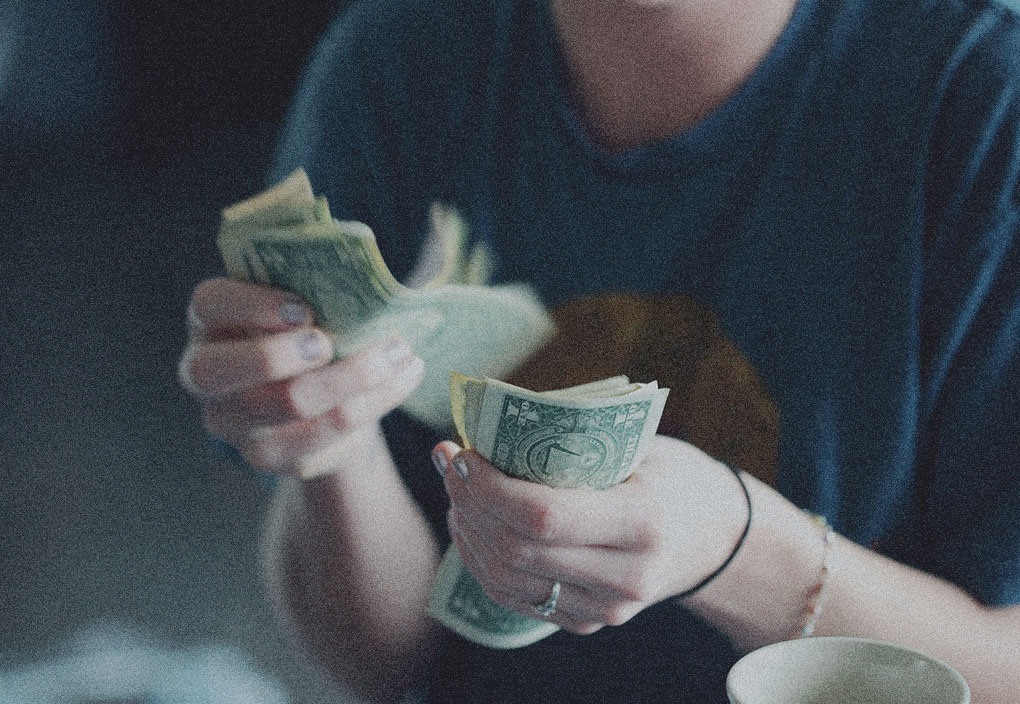Articles
Why Is My Cup of Coffee So Expensive?
Some days you’re wondering if you’ve been ripped off.
Some days it’s just about whether you’re willingly ripped off or not.
Let’s do fool’s math on your cup of joe.
If you’re looking at the global price for Arabica coffee, it ranges from $3- 3.50 USD/kg. That’s roughly IDR 45,000 per kilogram. A.k.a. exactly around the price of your daily takeaway coffee. Say, a cup needs 20grams of coffee grounds. That’ll make around 50cups/ kilogram. Let’s tone it down to 40 cups, lest your barista is still under training and more prone to making bitter over-extracted espressos and spilling coffee grounds. We’ll arrive at IDR 1,125/cup…. right the price of one sachet coffee.
At this point, you may either be getting even more cynical about the blooming café-culture trying to make the most out of this caffeine hype. Or you’d just shrug your shoulders, saying, “That’s just the way it is.” Of course, in this day and age where we don’t grow plants in our backyard and make dishes out of it, the ‘in between’ price has become part of common logic when assessing prices.
Plus, in the coffee-making world, everyone involved is basically a ‘taste avatar’ a.k.a. ‘taste bender’. They just get a hand on different kind of ‘elements.
There are the baristas, breaking sweats to find the ultimate recipe for beans of your choice, as well as crafting the art of adjusting the elements of temperature, grind size, water mineral, as well as drip rate to match your tongue.
Going a bit backward, the roasters controlling the elements of fire behind the stove to bring out the dormant taste of fruits, florals, sugar, spice, and everything nice inside the green coffee beans. Those playing on light to medium roast profile have to ensure there is not any unripe or greenish tastes left on the beans, while those sticking to dark profile have to be careful not to burn all the delicate taste out.
Most behind-the-scene of all, are the farmers. Tending to the coffee trees every day and night, only to witness the rewarding sight of sprouting coffee cherries, brightly red and lining up…. once a year. For this tenacity, farmers might ultimately be the most spiritual avatar of all. The elements under their control is no longer as mundane as brewing device or roasting machine. No, they’re dealing with elements of nature: humidity, rain fall, and amount of sunlight. And they do it with prayer.
Now, now, your cup of coffee gets inflated 50 times fold to get into these avatars. Not to mention other human beings involved to ensure your coffee quality: green bean buyers, café managers, waitresses, etc. But of course, these big chunk of multipliers don’t spread out evenly. And guess who’s the one receiving the least yet risking the most? No other than man behind the stage, the farmers.
With the risk of failed crops and earning nothing for the rest of the year, it’s been a usual practice for farmers to plant other crops or herding cattle. Against the notorious myth of multitasking, this spread-out attention lessens the chance of farmers developing the latest farming method or even minding to carefully pick only the red cherries for the pursuit of one quality coffee. Considering that farmers in Indonesia usually own around 1 hectareof coffee trees, which produces 700 kgcoffee cherries per year in total…. IDR 2,6 millionper month is not so-encouraging incentive for farmers to fully dedicate themselves to nurture coffee.
It will be a wholly different story when farmers are paid above the market price (let’s just call it ‘C-price’). With higher wages, farmers can save and plan their livelihood ahead. This is exactly the goodness brought by the third wave hype. With more and more coffee enthusiasts jumping onto the hunt for delicate taste, more and more highlight is given to the important role of seemingly humble efforts from the farmers. Specialty coffee is all about this pursuit. Ultimately, a sustainability scheme is all about rewarding the farmers for their commitment to produce this high-quality coffee.
In such an ideal world, with this scheme, farmers shall prosper already from the current trend. Especially when #latte hits 6 million posts in Instagram.
But they are not.
Even with the sustainability scheme, no one can 100% guarantee that big chunks of the extra amount we pay for a cup of coffee will go into the farmer’s pocket. Because, more often than we’d like, we pay to ignore.
So long and convoluted is the chain from a farm to a cafe, the sustainability movement could prosper even without the farmers it wishes to advocate in the first place. Especially, when the label ‘sustainability’ end up as being mere marketing gimmicks. Just because a café or a business claims to be championing ‘sustainability’, doesn’t mean they exactly know which farm they source their coffee from. Again and again, marketing does its job really splendidly, all we care is just how good we feel about buying something. That’s exactly about how far ‘sustainability’ label will bring us.
Unless, you ask.
Ask about how the coffee is sourced, from which farm it is sourced.In Morph, we try sourcing with transparency. We question every detail, and getting to know better the intricacies of what makes the coffee taste that way. Sadly, ‘try’ maybe is the furthest we can do until we get to visit the farm on ourselves. Because neither of us get to roast, brew, and drink side-by-side the farm. But, we try. Then we spread the words in weekly love letters for those buying coffee from us, which may or may not eventually reach you. Still, a little ‘try’ won’t hurt.
This may be against the common business practice as we know it. First thing first, café owners may not be really eager at the prospect of having competitors sourcing the same kind of beans. Our take on this would be to look at the fact that there are plenty of things in the play behind a good cup of coffee. Producers only play the part of curating the coffee. There are also roasters & baristas in this stead. Secondly, we think it’s an absolute nonsense to pay high price to be soothed by bullshitsrather than to be guaranteed the real quality of a product.
For every question your favourite barista can’t answer (even if she’s cute and all), there’s a higher chance that you’re paying more for other thing than a good taste of coffee.
Unless you’re really up there for hours of Wi-Fi.
Photo by Sharon McCutcheon on Unsplash.

